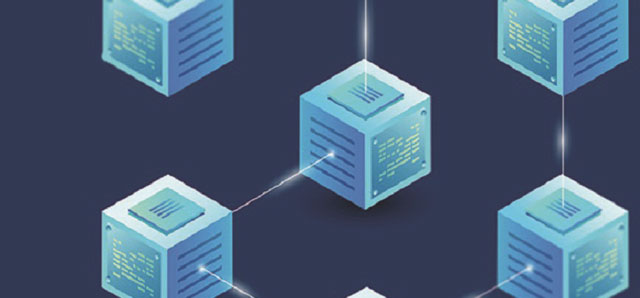
ANALYSIS: Bitcoin is often confused with blockchain which is the technology on which the cryptocurrency is based
Kampala, Uganda | Morris Borris Atugonza | A blockchain is a database that is shared across a network of computers. Once a record has been added to the chain it is very difficult to change it. Records are bundled together into blocks and added to the chain one after another. The basic parts of blockchain comprise `the record’; that is any information – for example a deal, `the block’, which is a bundle of records, and `the chain’ which is the blocks linked together.
Here’s how a deal gets included in a blockchain:
STEP ONE
A trade is recorded. For example, X is selling two of his coins to Y for Shs10,000. The record lists the details, including a digital signature from each party.
STEP TWO
The record is checked by the network. The computers in the network, called ‘nodes’, check the details of the trade to make sure it is valid. The nodes on the network work together to verify transactions and are rewarded with the blockchain’s currency; a process known as `mining’. The miners are rewarded for their work. It covers their running costs (electricity and maintenance etc.) and a profit.
STEP THREE
The records that the network accepted are added to a block. Each block contains a unique code called a `hash’. It also contains the hash of the previous block in the chain. Any change in the block or information generates an entirely new hash.
STEP FOUR
The block is added to the blockchain. The hash codes connect the blocks together in a specific order.
Difference between block chain and traditional ledgers
The way that traditional (non-blockchain) ledgers work is very similar to the way you would share a Microsoft Word document. While you are editing the document, everybody else is locked out and cannot make changes. Once you have finished making your changes, you send it out. Then it can be changed further. When another party works on the document, you too are locked out and cannot make changes until they are finished and send it back to you. In a blockchain system, however, all users can view the changes while they are being made.
Characteristics and advantages of blockchain
- Decentralisation:
Blockchain requires no central server to store the data, which means it is not centralised. This is what makes the blockchain so powerful. Instead of the server being stored in one place, it is stored on the blockchain and is powered by many different computers/nodes. This means there is no third party to trust and pay a fee to.
- Unbreakable and security:
Blockchain technology is secured with cryptographic techniques making it near impossible for hacking or illicit changing of data. The only illicit way to make changes would be to hack more than half of the nodes in the blockchain since the database cannot be changed without more than half of the network agreeing, which again, is why it is more secure to have more nodes/computers running the blockchain.
- Trust and transparency
Trust occurs due to the shared database where everyone can view the full details of the transactions within it; including the original source, date, time and the destination of the transaction.
- Cost-effective
Blockchain is a trusted peer-to-peer network so it removes the need for a central third party hence eliminates the costs rewuired for a third party.
This was further attested to by Patrick Mweheire , Chairman of Uganda Banker’s Association and Stanbic Bank managing director. He said banks could adopt blockchain technology to lower operational costs and risks. In an interview, Mweheire told Daily Monitor that besides the risks associated with blockchain technology, there are certain aspects which are ideal for the banking sector. Aspects such as data processing, settlements and payments and anything that reduces costs and risks.
A number of operational costs feed into bank accounts, which Mweheire said could be eliminated by blockchain technology.
“Banks face high operational cost of up to 70 per cent. Therefore, if there is a way we can eliminate them, why not?” he said, indicating that the banking sector was ready to adopt some areas of blockchain technology.
According to the 2017 financial results Stanbic spent close to Shs400 billion on operational costs; among them employee costs, premises costs, franchise fees, and IT expenses.
Mweheire said Stanbic uses Shs40 billion on ICT, which could reduce through the use of blockchain technology.
- Availability
Blockchain peer-to-peer network eliminates the central point of failure; hence even if a computer breaks down or leaves the network, there are other computers that will keep the network running. This is most applicable in hospital and taxation servers where data needs to be accessed at all times and shared across the entire network.
Applications of blockchain
- Cryptocurrencies
The first and foremost known use of blockchain technology is cryptocurrencies such as bitcoin, onecoin to mention but a few of the 1,600 crypto currencies available to-date. Bitcoin is often confused with blockchain. Bitcoin is a digital currency and blockchain is the technology on which the currency is based.
How does bitcoin work?
Bitcoin was the first cryptocurrency to use blockchain technology. It acts as a store of value. It allows for peer-to-peer transactions that do not need a third party, such as paypal or a bank. The bitcoin blockchain is a database (known as a “ledger”) that consists only of bitcoin transaction records. There is no central location that holds the database, instead it is shared across a huge network of computers. So, for new transactions to be added to the database, the nodes must agree that the transaction is real and valid.
- Banking
Financial institutions have been investing in blockchains to simplify their record-keeping for payments.
- Supply chain
Recording trades on a blockchain offers a way to check the history of a product. For example, jewelry companies hope it can assure customers that diamonds are not from places where they could finance war. Considering that most products on the market are not made by one single entity rather by a chain of suppliers who sell their components. Using blockchain technology would “proactively provide digitally permanent, audit-able records that show stakeholders the state of the product at each value-added step. This way the brand does not take the backlash. Companies that have tried this include provenance and skuchain.
- Healthcare
With blockchain, medical history could be securely stored and controlled by patients.
- Voting
Blockchain records could create tamper-proof election returns. There is also uninterrupted voting in business and transactions. As such the latest, fastest, consensus model is Delegated Proof of Stake (dpos). “dpos leverages the power of stakeholder approval voting to resolve consensus issues in a fair and democratic way. All network parameters, from fee schedules to block intervals and transaction sizes, can be tuned via elected delegates. Deterministic selection of block producers allows transactions to be confirmed in an average of just 1 second. Perhaps most importantly, the consensus protocol is designed to protect all participants against unwanted regulatory interference.”
- Property records
Storing land records on a blockchain could cut down on costly title research and insurance. In politically unstable places, it could help prove ownership. This has evolved into the new form of real estate record keeping. Block chain could come in handy in the process of land registration. This provides publically accessible legers. Many countries are picking up this idea for example Netherlands, Sweden, and Georgia.
- Smart Contracts
Smart contracts are “self-automated computer programs that can carry out the terms of any contract. This means this is financial security (mainly cryptocurrency) that is held in escrow by a network and is to be routed to recipients based on future events, and computer code. Smart contracts enable businesses to bypass regulations and lower the costs for common financial transactions. These contracts come with the security of blockchains i.e. they are unbreakable and without third party interference. Best example of smart contract would be the release of the Ethereum project. The Ethereum project could be defined as “a decentralised platform that runs smart contracts: applications that run exactly as programmed without any possibility of downtime, censorship, fraud or third party interference. One company called Slock uses an Ethereum-enabled platform to allow customers to rent bicycles where they can unlock a smart lock after both parties agreed on the terms of the contract.
- Cloud Storage
With the connectivity of various computer systems, block chains avails unlimited Cloud storage. One company, Storj is offering secure cloud storage using this application. Average users get to store data while on the other hand significantly reducing the cost of data storage data for companies and any other personal users.
- Crowdfunding
Crowdfunding is the practice of funding a project or venture by raising small amounts of money from a large number of people typically via the internet. Innovations such as kickstater and Gofundme suggest that people want to have a direct say in product development. Blockcahin takes this to the next level by potentially creating crowd-sourced venture capital funds. A good example of these would be participants purchasing tokens allowing them to vote on a smart contract venture capital investment. Voting power is appropriated according to the tokens held. This system was used in the 2016 Decentralised Autonomous Organisation that was Ethereum based.
- Intellectual Property.
Digital information can be easily reproduced and likely distributed. However with blockchain smart contracts we can have protection of copyright and automate the sale of creative work on the internet. One such system is Mycelia that uses blockchain to create a peer to peer distribution of music. Mycelia enables musicians sell songs directly to the listener as well as provide license samples to producers all automated by smart contracts and crypotcurrency.
- Anti-Money Laundering and Know your Customer
Every financial institution must perform due diligence for your Know You Customer process as demanded by the Financial Institutions Act section 7 as amended in 2016. Furthermore all financial institutions are to avail account information on demand and when it exceeds a specific amount in a bid to fight money laundering to the Financial Intelligence Authority (Section 18 Anti money Laundering Act). This process is labour intensive and can be reduced through cross institution client verification. A start up known as Tradle is developing an application known as Trust in Motion (TiM) that allows customers to take snapshots of key document such as passports, utility bills. Once verified by the bank, this document is cryptographically stored on the blockchain.
**Morris Borris Atugonza is a law student at Makerere University
 The Independent Uganda: You get the Truth we Pay the Price
The Independent Uganda: You get the Truth we Pay the Price


